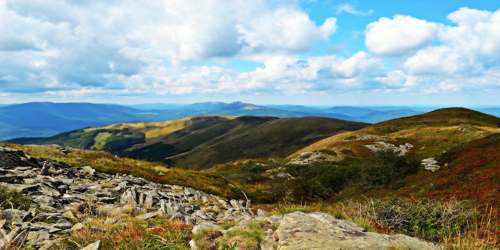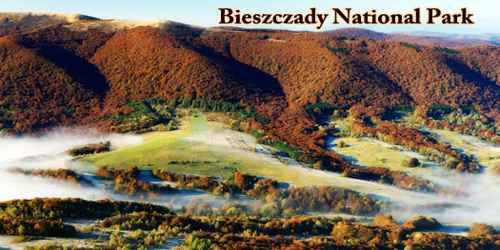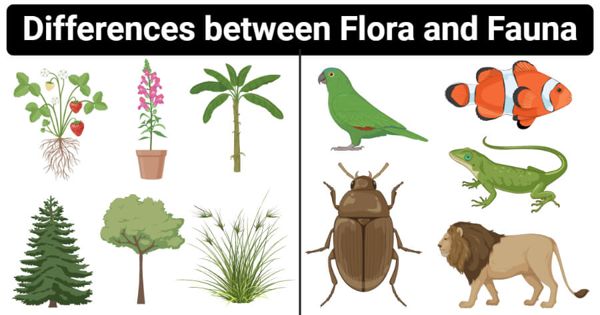Bieszczady National Park (Polish: Bieszczadzki Park Narodowy) is located in the southernmost portion of Poland, it is one of the country’s largest national parks. It encompasses an area of nearly 300 square kilometers in the south-eastern region of Podkarpackie Voivodeship.
In 1992, the BNP (Bieszczady National Park) became a part of the “East Carpathian” International Biosphere Reserve, the first UNESCO reserve to be located in three countries. The Polish portion of this reserve is complemented by sections in Ukraine and Slovakia.

The park was created in 1973. At the time it covered only 59.55 square kilometers (22.99 sq mi), but over the years it was enlarged four times. The last enlargements took place in 1996 (when the park incorporated the former villages of Bukowiec, Beniowa, and Carynskie) and in 1999 (when the former villages of Dzwiniacz, Tarnawa, and Sokoliki were added).
It is the largest mountain national park in Poland and is the only park that protects all of Poland’s large mammals, including the Brown Bear, Wolf, Lynx, European Bison, Red Deer, Wildcat, Golden Eagle and Eagle Owl, among numerous birds of prey. Enjoyable in all the seasons, visitors can explore the serene nature on horseback, by bicycle, cross-country skis, or on foot. This laid-back area is populated with wooden churches, wild horses, and the unusual feel of space providing serenity.
The park contains the highest sections of the Polish fragment of the East Carpathians, together with their largest attraction: unique mountain pastures located above the tree line.
Forests cover about 80% of Bieszczady National Park. The woods are mainly natural; in some cases, it can be said that they have preserved their pristine character. The highest peak in the park, Tarnica, is 1,346 meters (4,416 ft) above sea level.
The park’s riches include the large predators that inhabit it, including wolves and lynxes. Bears can also be spotted here, and according to WWF statistics around 80 of them live in the Bieszczady range. Another of the park’s attractions is its growing herd of bison, at present numbering around 280 members. This is the second-largest collection of wild bison in Poland (after Białowiejski Forest) and thus in the world. A large population of deer and stags live here as well, as do over 140 species of birds. The park also hosts a Hucul horse farm.
Until the year 1945, the area of Bieszczady was fairly densely populated. However, in 1947 during a period of terror, known as “action Vistula”, thousands of people where exiled from the area known as the “displacement”. Soldiers plunged into people’s houses and commanded them to leave their homes within a half hour and only allowed to take basic items, their homes were then burnt to the ground and the families sent to other places far away. Due to this enforced displacement, the former villages have returned to nature.
A unique feature of the BNP (Bieszczady National Park) national park is the numerous traces of settlements from before the Second World War. In the 1940s, residents of this area were resettled in other parts of Poland. Monuments to them can be found in the form of historical wooden Greek Orthodox churches joined to the Podkarpackie Wooden Architecture Trail.
Hiking trails in the Bieszczady National Park can be a great way to connect with nature, learning about the plants and animals that live in the area. In discovering the secrets of nature it helps to keep the Bieszczady way of life alive by using the many existing nature trails available. They were set up mainly for young people and visitors to the Park, for school trips, but they can also be used successfully by adults wishing to explore the park. Today, there are 12 paths, most of which run along the marked trails or nearby.
In 1998, the Council of Europe awarded the BNP (Bieszczady National Park) a European Diploma for its contribution to the protection of natural values unique to the entire continent. The park’s territory is part of the Natura 2000 network.
Information Sources:















